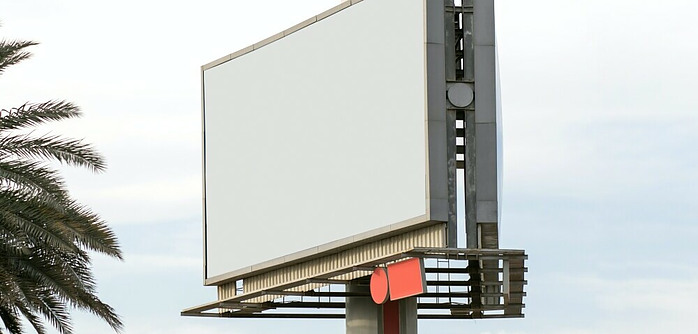Advertise Your Website for Dollars.
Advertising can be a vital revenue stream for any website. If you’re thinking about incorporating ads into your site, you’re making a decision that could significantly support your growth. The right advertising strategy not only generates income but, when done thoughtfully, enhances the overall experience for your visitors. There are many options available, but today, I will focus on three heavy hitters in the world of web advertising: Ezoic, Adsense, and Microsoft Advertising.
Selecting the best platform for your needs involves understanding the uniqueness of each service. Your choice can impact everything from your site’s user interface to the size of your earnings. A fitting advertising match aligns with your site’s content, audience preferences, and personal management capabilities.
While advertising can certainly be profitable, it can also have implications for your site’s reputation and search rankings. Hence, the quality of the ads you showcase matters greatly. It influences the trust your audience places in your site and potentially affects your authority. It’s not just about displaying ads; it’s about choosing partners that reflect the standards and expectations you’ve set for your brand.
Understanding Ezoic, Adsense, and Microsoft Advertising
Getting smart about the tools you can use to monetize your site is key. I know, picking the right platform can feel like navigating a maze. So, let’s shed some light on three major players in the space: Ezoic, Adsense, and Microsoft Advertising.
Ezoic stands out with a twist: it’s powered by artificial intelligence. This isn’t just your run-of-the-mill ad network; Ezoic is designed to optimize user experience while balancing revenue goals. By learning your audience’s behavior, it dynamically adjusts ad placements and types to find that sweet spot between earnings and engagement.
Enter Google Adsense, potentially the most well-known tool in your arsenal. Why? Well, it’s often one of the first monetization methods website owners think of. If you’ve got content, Adsense can serve up relevant ads with minimal fuss. It’s a straightforward model that’s maintained its charm over the years because of its simplicity and broad base of advertisers.
Then there’s Microsoft Advertising, which might fly a bit under the radar but has its perks, particularly for websites that attract an audience using Bing or other Microsoft services. It’s an avenue not to be overlooked, as diversifying could mean tapping into a different subset of advertisers and potentially increasing revenue streams.
While you’re here for the practicalities, I’d say it’s crucial to align with a platform that reflects your readership’s preferences and your content’s context. Each option has its nuances and serves different needs. My advice? Understand them well, and make an informed choice on which platform or combination thereof best suits your website’s objectives.
Comparing Readership Requirements and Payment Options
Selecting the right advertising platform for your website isn’t just about who offers the highest bid. It’s crucial to understand the unique requirements and payment mechanisms each platform presents. Let me break down the factors you should consider when comparing Ezoic, Adsense, and Microsoft Advertising.
Readership.
For starters, readership requirements can be a make-or-break factor. Ezoic typically requires a minimum of 10,000 monthly page views to consider your site for participation. On the other hand, Google Adsense has no specific traffic threshold, which can be quite appealing for newer or smaller sites. Microsoft Advertising also does not explicitly state a minimum traffic requirement; however, the platform benefits those with a substantial audience due to its integration with the Microsoft and Bing networks.
Payment.
When it comes to payment, knowing how you’ll earn is key. Ezoic offers a revenue share model and pays on a net-30 basis, often appealing for steady income. Adsense popularized the cost-per-click (CPC) and cost-per-thousand impressions (CPM) models; payments are usually made monthly, once you exceed the $100 threshold. Microsoft Advertising also operates on a CPC/CPM model and processes payments monthly with a minimum threshold similar to Adsense.
Thresholds.
Consider payout thresholds too. These are the set amounts your earnings must reach before you’re paid. Ezoic’s threshold sits comfortably at $20, catering to sites with modest earnings. Google Adsense and Microsoft Advertising both set their payout thresholds at $100, which might require accumulating earnings over a few months for smaller websites.
Remember, the fine print matters. Each platform comes with its own set of policies, and it’s important to review these to ensure your content aligns with their standards. This isn’t just about compliance; it’s about creating a trustworthy environment for both your audience and advertisers.
Selecting The Right Platform For Your Website
I’ve shed light on readership requirements and payment options, which leaves us with the important decision—choosing the right advertising platform for your website. This is a crucial step that will have long-term implications for both your revenue and user experience.
First, consider your audience and the niche of your site. The demographics of your readership can influence which ads are most effective. Ezoic’s intelligent platform might be best for diverse content, while Adsense could be more fitting for a wider, general audience, and Microsoft Advertising may serve well for a professional or tech-savvy demographic.
The quality of your content and the adherence to SEO also play pivotal roles. A platform like Ezoic, which optimizes for both, might enhance your site’s performance. However, for straightforward ease of use without much fine-tuning, Adsense is likely the more user-friendly choice.
Before making your decision, reflect on how the ads will integrate with your site. Aim for an advertising experience that feels seamless and non-invasive. Remember, the goal is to maintain, if not improve, the user experience.
Conclusion
Finally, TAKE ACTION. Apply to the platform that aligns with your goals, and set up your site for monetization. Then, monitor your site’s performance and user engagement closely. You can always make changes if another platform seems to suit your needs better down the road.
While there is no one-size-fits-all answer, your informed choice today can increase revenue and serve your readers with relevant ads that enhance their experience on your website.
I hope this helps.
Steve
 Some links on this site may be affiliate links, and if you purchase something through these links, I will make a commission on them.
Some links on this site may be affiliate links, and if you purchase something through these links, I will make a commission on them.
There will be no extra cost to you and, you could actually save money. Read our full affiliate disclosure here.

